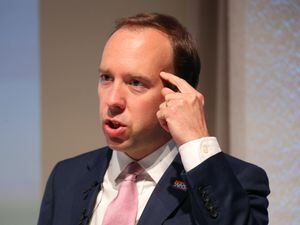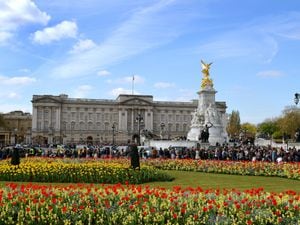Coronavirus spread ‘largely due to households meeting’ – Health Secretary
Matt Hancock highlighted the importance of social distancing rules.

The spread of coronavirus is largely due to people visiting family and friends and not keeping to social distancing rules, the Health Secretary has said.
Matt Hancock said test and trace data has shown “most of the transmission is happening between households” and between people visiting family and friends.
His comments came after it was announced that people from different households in Greater Manchester, and parts of east Lancashire and West Yorkshire would be banned from meeting each other inside their homes or in gardens following a spike in cases.
Mr Hancock told BBC Breakfast: “Whenever anybody tests positive, the vast majority of them we manage to speak to, and we ask which contacts they’ve had, and that’s shown that the vast majority of contact of people who have the virus, other than people in their own household… is from households visiting and then visiting friends and relatives.
“One of the terrible things about this virus is it thrives on the sort of social contact that makes life worth living and that is a serious problem with the virus.”
On Thursday night, Mr Hancock wrote on Twitter: “The spread is largely due to households meeting and not abiding to social distancing.”
He said two households can still meet “at a social distance in a public place outdoors”, such as a park where there is lots of space, but meeting another household in pub gardens or outdoor restaurant space is not allowed in the newly restricted area.
Asked about the prospect of crowds gathering together too closely on the expected hottest day of the year on Friday, the Health Secretary told the BBC: “It’s so important that people follow social distancing rules. My message is people need to keep doing that.
“We’ve shown we’re prepared to take action if that’s necessary.
“Having just announced this action last night I don’t this morning want to talk about what more we might do, but we have
shown we’re prepared to take action.”
Dr Michael Head, senior research fellow in global health at the University of Southampton, said: “Meeting indoors, particularly within the house of a friend or relative, increases the risks of transmission.
“There will be prolonged close contact, potentially over several hours. Rooms in households will be smaller and may be less well ventilated than in other larger indoors environments such as restaurants. There may be increased touching of shared objects, such as cutlery, and those meeting may well hug and kiss.
“All of these activities individually pose a small risk, but if enough low-risk activities take place, then the overall risk of transmission of Covid-19 increases.”
Professor Keith Neal, emeritus professor of the epidemiology of infectious diseases at the University of Nottingham, said transmission within households has been recognised as “one of the main routes of transmission from the earliest days of the pandemic”.
He said: “This is almost certainly due to the inability to keep distances within a house and the length of exposure time.
“Households mixing will lead to much more significant exposures (people closer together) and more time spent in contact than other areas where social distancing is easier (such as pubs and restaurants) and where masks are required (shops and public transport).
“Both degree of exposure and time spent are important.”
Prof Neal also commented on multi-generational families, saying: “It is the number of people in the household which is the key factor.
“Multi-generational families is about an increased risk in older people – who are more at risk of serious infection – acquiring Covid-19 from people they live with.”





